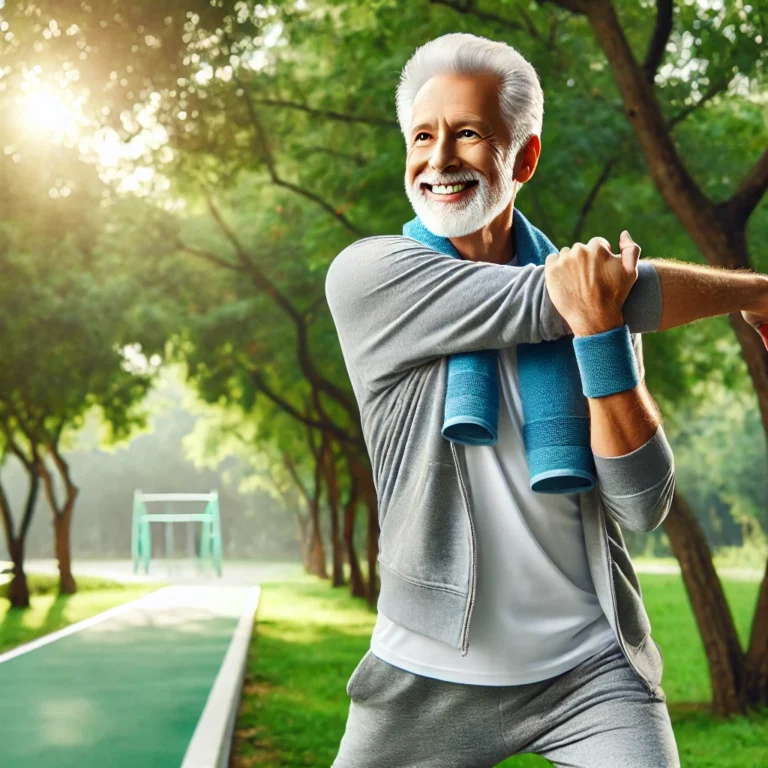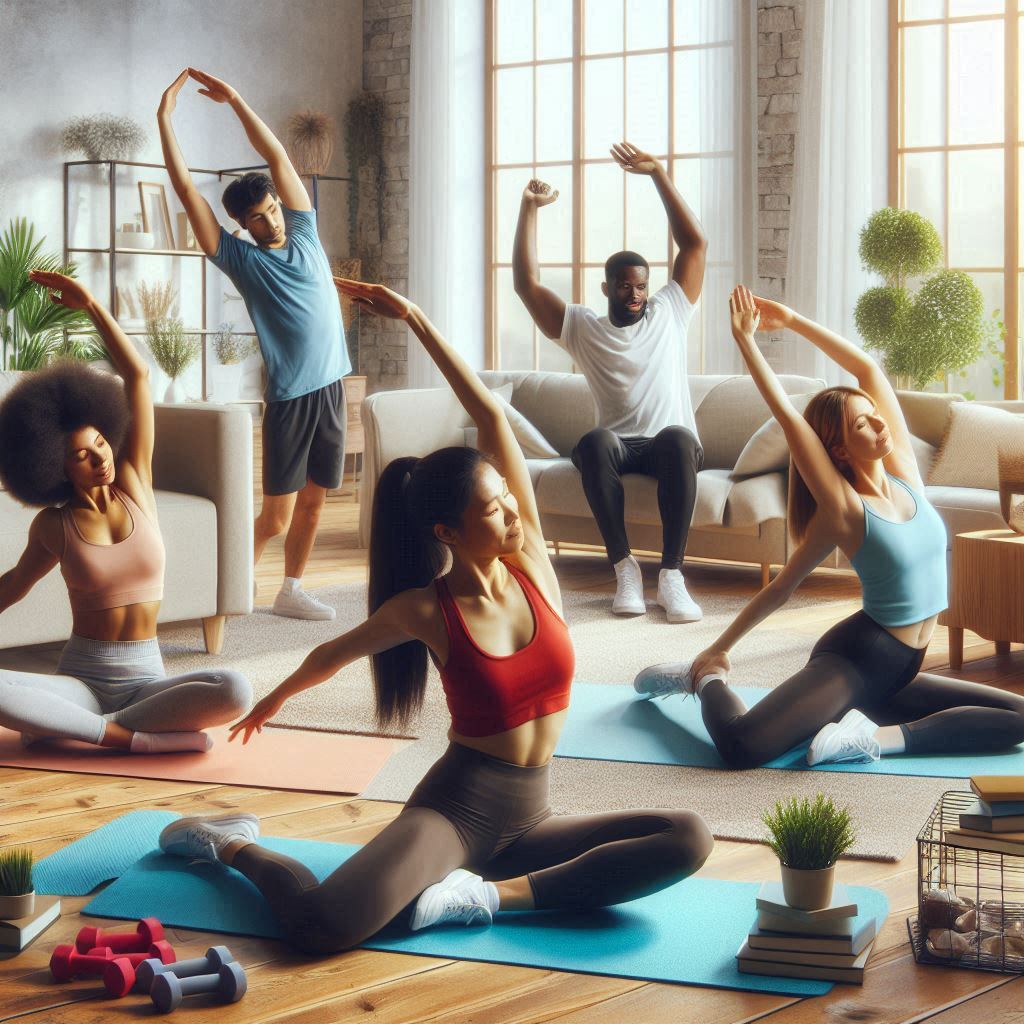Physical activities for senior men – Maintaining activity becomes more than a lifestyle choice as men age; it’s necessary to maintain general well-being, independence, and health. As one age, the body gradually starts to lose muscular mass, flexibility, and bone strength, which may restrict movement and raise susceptibility to chronic diseases. Slowing down these impacts is much aided by consistent physical exercise.
Physical activities for senior men enhance mental clarity and emotional well-being and help preserve muscular tone and joint function by improving cardiovascular health. This blog explores a variety of physical activities designed especially for older men. It provides useful tips and ideas to enable them to remain strong, flexible, and energetic during their golden years.
Acknowledging Aging
As we age, our bodies naturally undergo several physiological changes that can significantly impact daily functioning. One of the most notable is the gradual decline in muscle mass and bone density, a process known as sarcopenia and osteopenia, respectively. These changes can reduce strength, flexibility, and stability, increasing the likelihood of falls and related injuries. Additionally, joint stiffness and slower reflexes may further impair coordination and balance. By recognizing and understanding these age-related transformations, older adults can make informed decisions about their health. This awareness is crucial when selecting appropriate physical activities that are both safe and beneficial, helping maintain independence and overall well-being.
Advantages of Physical Activities for Senior Men
Regular exercise is a game-changer for senior citizens as it offers immediate and long-term health advantages. Physical activities for senior men improve cardiovascular health, lower the risk of chronic diseases like diabetes and hypertension and build muscles and bones to promote greater mobility and balance. This immediately reduces the likelihood of falls, a significant senior worry. Beyond just physical benefits, exercise lowers anxiety, improves sleep, and raises mood, therefore boosting mental well-being. It improves cognitive ability and helps to maintain memory and concentration. Most significantly, being active helps elderly people be independent and enjoy everyday life on their own terms.
Senior Recreation
Reduces symptoms of anxiety and sadness, raises mood, and enhances cognitive ability. 😊
Maintaining everyday task performance helps one to foster independence by utilizing autonomy.

Suggested Physical Exercises
Walking is a low-impact workout that helps control weight and improves cardiovascular condition. These physical activities for senior men are Ideal. Swimming and water aerobics provide a full-body exercise free of joint stress. Senior Strength Training in Lifestyle: Resistance bands or small weights assist in preserving muscle mass and bone density. Exercises of Flexibility and Balance:
Yoga and Tai Chi improve coordination, flexibility, and balance, lowering fall risk. Monarch Landing+2 Senior Lifestyle+2 en.Wikipedia.org+2
Including Daily Physical Activity
Including fitness in regular activities may be fun and easy. Specify reasonable objectives: Start with reasonable goals, then progressively raise the intensity.
Plan frequent workout sessions to foster consistency.
Choose fun activities to keep your drive up.
Safety Issues
Safety comes first, particularly for senior citizens who lead physically active lives. Senior males should see their doctor before beginning any new workout program. This guarantees they are free from physical activity and helps them avoid any activities that can aggravate pre-existing medical ailments such as heart difficulties, osteoporosis, or arthritis.
Just as vital as the workout is, warming up and cooling down before and after activities. Warm-ups help muscles and joints become ready for action, lowering the danger of strains or injuries. Cooling allows the body to recuperate and progressively puts it in a resting condition.
Still, another important thing is to pay attention to your body. A warning indication is a pain; if anything seems off, most likely it is.
Exercise should be demanding but not agonizing. Especially while walking or conducting balancing exercises, it’s also smart to dress in suitable clothes and shoes to support joints and prevent slips or falls.
Including controlled environment exercises—such as those at home or in a gym under supervision—can provide additional safety for people who may be more prone to fall. Working with a physical therapist or professional trainer focused on senior fitness might help some.
Social Components of Exercise
The social contact regular exercise promotes is one of its underappreciated advantages. Group events include walking groups, fitness courses, or even pickleball games, which give senior men chances to connect, exchange stories, and escape loneliness.
Working out with friends may make exercises fun and foster responsibility, improving the chances of following a program. Senior exercise programs, local YMCAs, and community centers provide group sessions catered to older individuals; these environments inherently foster companionship.

Better mental health has also been connected to social contacts via physical exercise, which helps to lower anxiety and depression symptoms. Cognitive and emotional well-being can be improved by the sensation of belonging and the drive to attend regular group exercises.
Moreover, physical exercise with others usually brings an element of friendly rivalry and enjoyment, adding another level of involvement. The social pleasures of participating in an afternoon yoga session in the park or a laid-back game of tennis can be just as important as the physical ones.
Getting Beyond Obstacles to Workout
Senior men may run over challenges that prevent consistent physical exercise. Typical obstacles include a lack of drive, persistent pain, injury-related anxiety, or just not knowing where to start. The secret is developing workable answers that make exercise less scary and more easily available.
Beginning small is one strategy. Even five to ten minutes of exercise may have benefits and progressively lead to longer sessions. Establishing clear, quantifiable objectives—such as walking around the block every morning or attending two exercise sessions a week—helps maintain inspiration.
Another approach is to customize activities to match personal restrictions. Excellent low-impact choices that lower strain but increase strength and mobility include chair exercises, stretches, and water-based workouts.
Mental obstacles may also be broken down with family, friends, or coaches who provide fitness support. Establishing new, better behaviors usually depends much on encouragement and company. Remind yourself of the long-term advantages—greater freedom, better health, and better quality of life.
Finally, as necessary as removing the psychological obstacles. Past inactivity or health issues can deter many seniors. Still, starting never comes too late. Little victories compound, and every bit of progress matters.
Hydration and Diet
One component of the health puzzle is physical exercise solely. For elderly males, support for energy levels, muscular repair, and general health comes mostly from nutrition and water. Sincet metabolism typically slows down with age, choosing foods wisely becomes much more critical.
A well-balanced diet high in lean proteins, whole grains, fruits, and vegetables enhances cardiovascular health and helps preserve muscle mass. Strength exercise specifically calls for protein as it allows muscles to develop and heal. For bone health, foods heavy in calcium and vitamin D—such as dairy products or leafy greens—are essential.
Maintaining hydration is just as crucial, particularly when working out. Our thirst lessens with age, which might cause dehydration without our knowledge. The key is consistent daily drinking of water, not just during activity.
Meal timing around exercises also makes sense. While a good post-workout meal aids recuperation, a quick snack before exercise fuels performance. Great choices include smoothies, yogurt with fruit, or a few almonds.
Common issues for aging men include blood pressure and blood sugar levels; hence, avoiding too processed meals and too much salt or sugar consumption may help control both. Hydration and nutrition are about enabling your body to operate at its optimum, not just about eating well.
Monitoring Development and Maintaining Motivation
One great approach to keeping motivated is to monitor your path of fitness. Tracking daily steps, tracking exercise hours, or documenting your feelings after each session enables you to see the results of your diligence.
Tracking may be easy and satisfying using a fitness notebook or smartphone app. Many senior-friendly applications log everything from water consumption to sleep quality. Seeing quantifiable changes—such as enhanced strength, endurance, or balance—can be very inspiring.
Not only can rewarding oneself for reaching goals—no matter how modest—raise morale. Perhaps it’s a brand-new gym outfit after a month of regular walking or a reward for yourself with a massage following a great week.
One should be flexible. Objectives change, and it is reasonable to change them as necessary. Consistency and maintaining a good attitude are the most critical aspects. Surround yourself with encouraging individuals; celebrate every success; remember that the ultimate aim is not perfection but development.
Conclusion
One of the most effective strategies older men can use to keep their health, independence, and quality of life is being physically active. Every amount of exercise counts—from daily walks to a few moderate-weight workouts to a leisurely swim.
The objectives are to feel better, move more naturally, and live longer rather than to run marathons. Exercise may become a fulfilling activity in everyday life rather than a chore with the correct blend of drive, safety, and fun. Start where you are, use what you have, and do what you can. Starting never too late; the advantages will speak for themselves.





